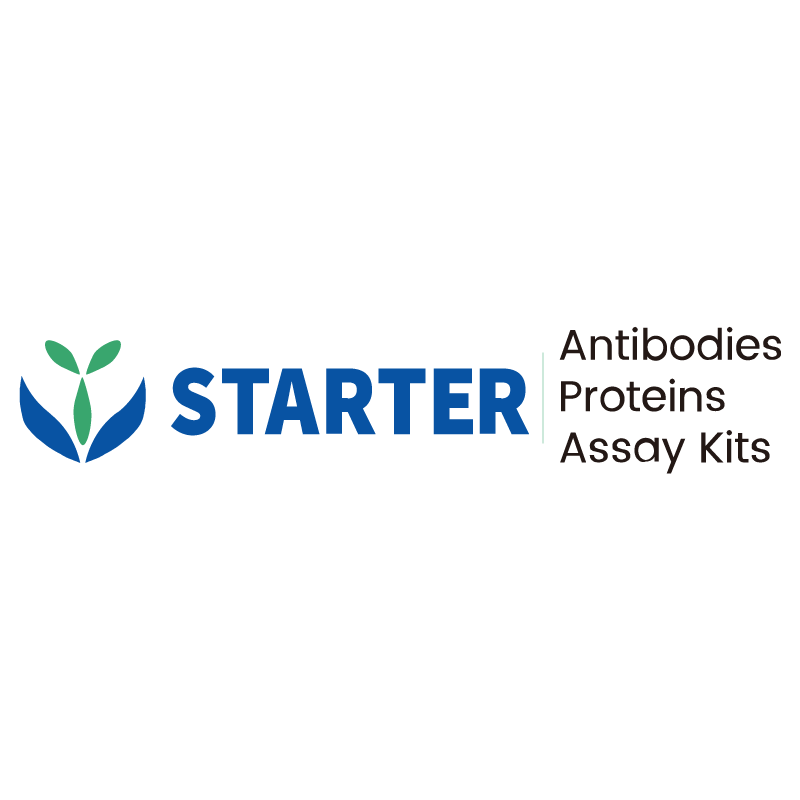WB result of AIFM2/FSP1 Recombinant Rabbit mAb
Primary antibody: AIFM2/FSP1 Recombinant Rabbit mAb at 1/1000 dilution
Lane 1: HeLa whole cell lysate 20 µg
Lane 2: MCF7 whole cell lysate 20 µg
Lane 3: A172 whole cell lysate 20 µg
Secondary antibody: Goat Anti-rabbit IgG, (H+L), HRP conjugated at 1/10000 dilution
Predicted MW: 40 kDa
Observed MW: 39 kDa
Product Details
Product Details
Product Specification
| Host | Rabbit |
| Antigen | AIFM2/FSP1 |
| Synonyms | Ferroptosis suppressor protein 1; Apoptosis-inducing factor homologous mitochondrion-associated inducer of death (AMID); p53-responsive gene 3 protein; AMID; PRG3 |
| Immunogen | Synthetic Peptide |
| Location | Cytoplasm, Nucleus, Mitochondrion, Cell membrane |
| Accession | Q9BRQ8 |
| Clone Number | S-2271-67 |
| Antibody Type | Recombinant mAb |
| Isotype | IgG |
| Application | WB, IHC-P |
| Reactivity | Hu, Ms |
| Positive Sample | HeLa, MCF7, A172, NIH/3T3, mouse kidney, mouse liver |
| Predicted Reactivity | Bv |
| Purification | Protein A |
| Concentration | 0.5 mg/ml |
| Conjugation | Unconjugated |
| Physical Appearance | Liquid |
| Storage Buffer | PBS, 40% Glycerol, 0.05% BSA, 0.03% Proclin 300 |
| Stability & Storage | 12 months from date of receipt / reconstitution, -20 °C as supplied |
Dilution
| application | dilution | species |
| WB | 1:1000 | Hu, Ms |
| IHC-P | 1:200 | Hu, Ms |
Background
AIFM2, also known as ferroptosis suppressor protein 1 (FSP1), apoptosis-inducing factor-homologous mitochondrion-associated inducer of death (AMID), or p53-responsive gene 3 (PRG3), is a protein encoded by the AIFM2 gene in humans. It is a flavoprotein oxidoreductase that plays a crucial role in regulating ferroptosis, a form of cell death characterized by iron-dependent lipid peroxidation. FSP1 primarily localizes to the plasma membrane and lipid droplets, and it suppresses ferroptosis by reducing ubiquinone (CoQ10) to ubiquinol (CoQ10-H2) using NAD(P)H as a cofactor, thereby preventing lipid peroxidation. This protein is also involved in the reduction of other molecules, such as vitamin K, and has been implicated in tumorigenesis and resistance to therapy in certain cancer models.
Picture
Picture
Western Blot
WB result of AIFM2/FSP1 Recombinant Rabbit mAb
Primary antibody: AIFM2/ FSP1 Recombinant Rabbit mAb at 1/1000 dilution
Lane 1: NIH/3T3 whole cell lysate 20 µg
Lane 2: mouse kidney lysate 20 µg
Lane 3: mouse liver lysate 20 µg
Secondary antibody: Goat Anti-rabbit IgG, (H+L), HRP conjugated at 1/10000 dilution
Predicted MW: 40 kDa
Observed MW: 39 kDa
Immunohistochemistry
IHC shows positive staining in paraffin-embedded human cardiac muscle. Anti-AIFM2/FSP1 antibody was used at 1/200 dilution, followed by a HRP Polymer for Mouse & Rabbit IgG (ready to use). Counterstained with hematoxylin. Heat mediated antigen retrieval with Tris/EDTA buffer pH9.0 was performed before commencing with IHC staining protocol.
IHC shows positive staining in paraffin-embedded human liver. Anti-AIFM2/FSP1 antibody was used at 1/200 dilution, followed by a HRP Polymer for Mouse & Rabbit IgG (ready to use). Counterstained with hematoxylin. Heat mediated antigen retrieval with Tris/EDTA buffer pH9.0 was performed before commencing with IHC staining protocol.
IHC shows positive staining in paraffin-embedded human hepatocellular carcinoma. Anti-AIFM2/FSP1 antibody was used at 1/200 dilution, followed by a HRP Polymer for Mouse & Rabbit IgG (ready to use). Counterstained with hematoxylin. Heat mediated antigen retrieval with Tris/EDTA buffer pH9.0 was performed before commencing with IHC staining protocol.
IHC shows positive staining in paraffin-embedded mouse cardiac muscle. Anti-AIFM2/FSP1 antibody was used at 1/200 dilution, followed by a HRP Polymer for Mouse & Rabbit IgG (ready to use). Counterstained with hematoxylin. Heat mediated antigen retrieval with Tris/EDTA buffer pH9.0 was performed before commencing with IHC staining protocol.


